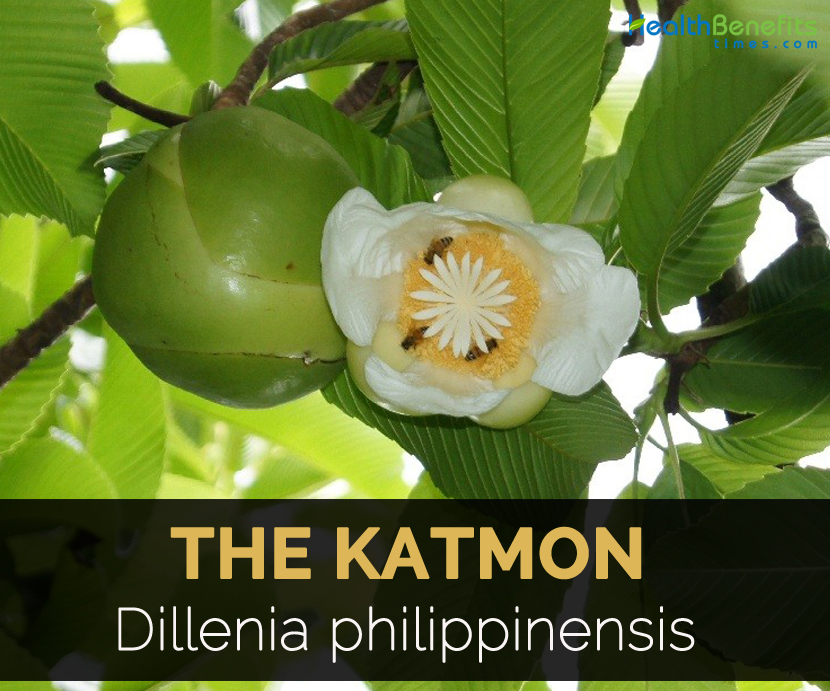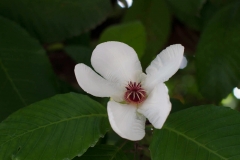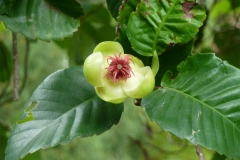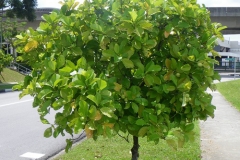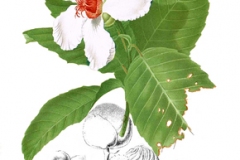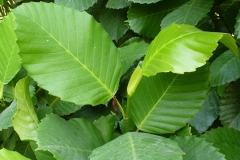Facts About Katmon
| The Katmon Quick Facts | |
|---|---|
| Name: | The Katmon |
| Scientific Name: | Dillenia philippinensis |
| Shapes | Globose, 5–6 cm across |
| Flesh colors | Green |
| Name | The Katmon |
|---|---|
| Scientific Name | Dillenia philippinensis |
| Native | The Philippines – it is endemic to the Babuyan islands and Sulu archipelago |
| Common/English Name | Katmon, Philippine Dillenia, Elephant apple |
| Name in Other Languages | Philippines: Kalambok, Kalambug (Bagobo), Katmon (Bikol), Katmon (Bisaya), Balale, Palali (Ibanag), Palali (Iloko), Bihis, Biskan (Igorot), Kalamnugui (Lanao), Palali, Pamamalien (Pangsingan), Bolobayauak (Panay- Bisaya), Katmon (Pampanga n), Diangin (Sambali), Kambug (Sulu), Palali (Subanum), Katmon (Tagalog); English: Elephant Apple, Hondapara Tree, Indian catmon, Ma-tad; Hindi: Chalta, Karambel; Sanskrit: Avartaki; Assamese: Outenga; Bengali: Chalta, Chalita |
| Plant Growth Habit | Small to medium sized, evergreen tree |
| Plant Size | 6 to 15 meters |
| Bark | Greyish brown, smooth |
| Leaf | Elliptic, elliptic or oblong-ovate, 12–25 cm long |
| Flower | White, large, showy, and about 15 cm across |
| Fruit shape & size | Globose, 5–6 cm across |
| Flesh color | Green |
| Seed | Brown blackish, 0.5 cm long and 0.3 cm broad |
Distribution
Katmon is found in the Philippins being common in forests of low and medium altitude throughout the islands in primary and secondary forests. Native to the country, the tree is found in Babuyan islands, Luzon, Mindoro, Polillo, Masbate, Guimaras, Leyte, Negros, Cebu and Basilan.
Plant description
Katmon is small to medium sized evergreen tree about 6-15 meters high with an erect to contorted bole with slight buttresses and smooth, greyish brown and shallowly fissured bark. Leaves are elliptic, large, 12–25 cm long, thick, coraiceous, glabrous and glossy green having serrated margins and prominently penni-veined. Flowers are large, white, showy and about 15 cm across. Flowers are five pale green cup shaped sepals, five obovate and spreading white petals. Outer stamens are shorter, slightly spreading and forms basket like structure. They are dark red with white tips in upper half of the length and yellow in basal half. Stamens have short stout filaments and long anthers. Carpels have separate firm radiating stylar branch with small concave stigma at the tip. Fruit is globose, 5-6 cm across made up of fleshy, imbricate and thin sepals which encloses syncarpous aggregate of carpels. Each carpel contains 1 to 5 small brownish-black seeds embedded in a soft and gelatinous pulp.
- Mix the fruit with sugar or the fruit decoction is used as a cure for cough.
- It is also used for cleansing hair.
- In Sabah, the paste of pounded young leaves or stem bark is applied on wounds and swellings.
- Bark and leaves are used as astringent and laxative.
- Fruit is used to provide relief from abdominal pains.
- Take the juice of leaf and bark for treating cancer and diarrhea.
- In Thailand, fruit pulp is used for washing hair.
- The fruit is used for treating dandruff and hair fall.
Culinary uses
- Use the fruits, flowers and young shoots as a flavoring for sour fish soup.
- Ripe fruits are also consumed fresh.
- It could be used to prepare sauce and jams.
- Cook the fruits as vegetables.
References:
https://www.itis.gov/servlet/SingleRpt/SingleRpt?search_topic=TSN&search_value=506115#null
https://www.scribd.com/document/370090156/Ethnobotalec-Katmon-Plant
http://www.stuartxchange.org/IndianCatmon.html


